Navigating the New EE Landscape: Your Action Plan for the EEA12 Analysis & EEA13 Plan
As many of you are aware, the landscape of Employment Equity in South Africa is undergoing a significant transformation. The Minister of Employment and Labour has ushered in the new Employment Equity Regulations, 2025, repealing the 2014 version. Alongside this, a crucial notice on the national economic sector and corresponding sectoral numerical targets came into effect on 15 April 2025.
Now, I know new regulations can often feel daunting, but I believe with a clear understanding and a practical approach, we can navigate these changes effectively and turn compliance into a strategic advantage for our businesses. This article is designed to give you, as a designated employer, a clear roadmap, focusing on the immediate actionable items: the EEA12 Consultation (Analysis) and the development of your new EEA13 Employment Equity Plan.
What Do These New Regulations Mean for You?
In essence, these 2025 Regulations bring a more structured approach to Employment Equity. They’ve introduced:
- Updated reporting forms (EEA2 and EEA4).
- New templates for your Employment Equity Analysis (EEA12) and your Employment Equity Plan (EEA13).
- Clearer enforcement mechanisms and even templates for the EE Certificate of Compliance (and notices for withdrawal).
- Helpful implementation guidelines to assist both employers and employees.
The headline news, of course, is the introduction of five-year sector-specific numerical employment equity targets. These targets apply to designated groups, including persons with disabilities, across eighteen economic sectors and focus on the four upper occupational levels:
- Top Management
- Senior Management
- Professionally Qualified/Middle Management
- Skilled Technical/Junior Management
From my perspective as a Senior BEE Advisor, these changes signify a move towards more robust compliance and a stronger emphasis on achieving tangible results through these sectoral targets.
Your New EE Plan: A Five-Year Horizon (2025-2030)
Designated employers, take note: you are now required to prepare and implement an Employment Equity (EE) Plan for the period 1 September 2025 to 31 August 2030. If your organization becomes a designated employer after 1 April 2025, your plan will cover the remainder of this five-year period.
Immediate Action: Laying the Groundwork with Your EEA12 Analysis
Before we can even think about drafting that new EE Plan, the absolute first step – and it’s a critical one – is to conduct a thorough Employment Equity Analysis (EEA12). This analysis is the bedrock of your EE Plan.
When you’re gearing up to prepare your EE Plan (as per Section 20 of the Act), remember to consult the relevant Codes of Good Practice (issued under Section 54). Your EE Plan must include all the components outlined in the new EEA13 template.
As you develop these plans and set your annual numerical targets (Section 20(2) of the EEA), you’ll need to meticulously consider:
- Your current workforce profile.
- The applicable 5-year sectoral numerical targets for your industry.
- The latest Economically Active Population (EAP) statistics.
Your Checklist for Analysis and Plan Development (Between 15 April 2025 – 31 August 2025):
To get you started, here’s a practical checklist of what designated employers should be focusing on right now:
- Raise Awareness: Ensure your employees and management understand these latest amendments. Clearly define everyone’s role in eliminating unfair discrimination. From experience, clear communication from the outset is key to smooth implementation.
- Review Classifications: Take a fresh look at how you categorize your occupational levels and how you classify individuals with disabilities. This needs to align with the updated EEA9 form and the revised definition of disability.
- Re-evaluate Your EE Committee: Section 16 now mandates the inclusion of trade union representatives in the consultation process. Ensure your committee is correctly constituted.
- Conduct a Barrier Analysis: This is crucial. Perform a comprehensive review of your existing policies, procedures, and practices. The goal? To identify any systemic barriers that might hinder you from achieving those new five-year sectoral targets.
- Draft Your New EE Plan: This plan must align with the latest legislative amendments. Think strategically here – consider factors like succession planning, current workforce patterns, and upcoming retirements.
- Get CEO Sign-Off: The new EE Plan needs official approval from your Chief Executive Officer (CEO).
Compliance Roadmap: Next Steps in Detail
- Perform Your EE Analysis (EEA12) – The Sooner, The Better!
- You need to gather comprehensive information. This includes your employment policies, practices, procedures, and a deep dive into your work environment to pinpoint those potential barriers affecting designated groups.
- A core part of this is developing a detailed workplace profile. This will help you clearly see where individuals from designated groups are underrepresented across different occupational levels.
- Important Note: Even if you’ve done similar analyses before, all designated employers must create a new plan using the updated prescribed forms.
- Snapshot Date: You’ll need to select a specific date for your workforce profile snapshot. This date must be no later than the cut-off. My advice? Work backward from 1 September 2025 to give yourself ample time for consultation and plan preparation.
- Develop Your New EE Plan (EEA13) – Before 1 September 2025!
- Armed with the insights from your EEA12 analysis, you can now draft your EE Plan as per Section 20 of the EEA.
- Consultation is Non-Negotiable: Engage in meaningful consultations with your workforce representatives regarding both the analysis and the draft EE Plan.
- As outlined in the General Administrative EE Regulations, this plan will cover the five-year period from 1 September 2025 to 31 August 2030. (Remember, if you become designated after 1 April 2025, your plan covers the remaining period).
- Your plan must include numerical targets. These are aimed at achieving fair representation of suitably qualified individuals from designated groups across each occupational level. How do you set them? By carefully assessing your current workforce profile, the new sectoral targets, and the relevant EAP.
- Submission: While you don’t automatically submit the EE Plan to the Department of Employment and Labour, be prepared to present it if the Director-General requests it during a review.
My Perspective: Beyond Compliance to True Transformation
As a passionate advocate for equitable workplaces, I see these new regulations not just as another layer of compliance, but as an opportunity. An opportunity to genuinely assess where we stand, to identify and dismantle systemic barriers, and to build truly inclusive environments where all South Africans can thrive. The focus on sectoral targets, while challenging, pushes us to be more deliberate and strategic in our efforts.
This isn’t just about ticking boxes; it’s about fostering talent, driving innovation, and reflecting the rich diversity of our nation within our organisations.
Stay Ahead of the Curve with BEE123
Navigating these changes can feel complex, but you don’t have to do it alone. At BEE123, we’re committed to providing you with the tools and expertise you need. Our BEE123 software is designed to simplify complex calculations, ensure accurate reporting, and keep you aligned with the latest legislation, including these new EE requirements. Plus, our team of expert advisors, myself included, are always here to answer your questions and provide the guidance you need every step of the way.
Let’s embrace these changes proactively and work together to build a more equitable and prosperous future for all.




